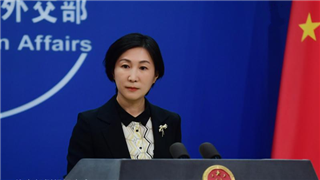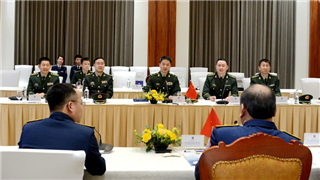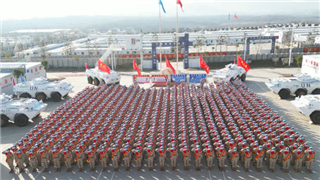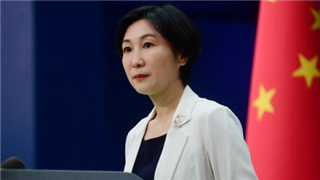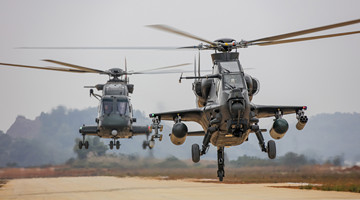By Li Zhe
The US Department of Defense released in a package its National Defense Strategy (NDS), Nuclear Posture Review (NPR) and Missile Defense Review (MDR) on October 27, 2022, to further elaborate on the incumbent administration’s security outlook after issuing the National Security Strategy on October 12.
Among them, the NPR gave a pretty comprehensive review of the main nuclear security challenges faced by the country now and its countermeasures in store, coming to the strategic judgment that China is a pacing threat to the US. The document has inherited both Trump’s “major-country competition” theory and Obama’s arms control vision of a “nuclear-free world”, which is just one example of its logical paradoxes. There are three questions the document doesn’t answer, at least not clearly.
How to realize the ideal of nuclear arms control in the context of major country competition?
Biden during his election campaign vowed to reduce the use of nuclear weapons, and has reiterated his stance to lower the strategic position of nuclear weapons in several documents since he came into office.
So far, however, what the Biden administration has done falls long behind what it promised. Despite all the trumpeting of nuclear arms control, it has continued to see nuclear weapons as an important strategic means to serve its major country competition, even likely to rely more on it.
For one thing, the US has officially affirmed China and Russia as major nuclear states and set the goal of developing the capacity to deter both countries simultaneously. For another, it has sped up the modernization of its nuclear arsenal. A request for US$34.4 billion for FY2023 has been submitted to modernize the “triad” deterrence system alone, much more than the US$27.7 billion in FY2022. Thirdly, it is working to fill up the “deterrence tool kit”. In addition to traditional nuclear forces, the US has paid more attention to non-nuclear domains such as hypersonic, space and cyber technologies, trying to foster low-cost, high-yield “integrated deterrence”.
How to maintain “strategic stability” in the context of major country competition?
Strategic stability usually includes stability in arms race and stability in crisis. The latest NPR, on the surface, expressed the wish to maintain strategic stability, but that’s just about how far the idea can go as long as the strategic focus stays on major country competition. A close look at what the current administration has done in the past two years would show that it has been weakening rather than strengthening strategic stability.
On the one hand, it develops non-nuclear, intermediate-range missile and anti-missile capabilities in a borderline move to establish both offensive and defensive deterrence, which may easily create a security dilemma and destroy the stability of arms race. On the other hand, it plans to “customize” deterrence against China and Russia using tactical nuclear weapons like W76-2,B61-12and dual-purpose warplanes, which not only lowers the threshold of using nuclear weapons, but also – considering the blurring line between nuclear and conventional weapons – easily leads to misjudgment in a crisis and consequently jeopardizes the stability in crisis.
How to balance “extended deterrence” with “nuclear non-proliferation” in the context of major country competition?
The Biden administration attaches great importance to its global alliance and is going all out to weave a resilient system with the US in the center, Indo-Pacific and Europe as two wings, and involving several multilateral regimes including the AUKUS, QUAD, and G7. In the Indo-Pacific direction, the US is building AUKUS in the south and trying “nuclear sharing” in the north by transferring nuclear technology and materials to Australia on the one hand and adding Japan and ROK’s weight in its deterrence system on the other.
In the European direction, the US has consistently armed NATO with nuclear weapons, promoted “nuclear sharing” to more members leveraging the Ukraine crisis, and furthered the deployment of tactical nuclear weapons in hopes of standardizing forward deterrence with the more widely applicable F-35. America’s exercise of “double standards” in extending deterrence has grossly undermined the nuclear non-proliferation mechanism and spurred non-nuclear states to own nuclear weapons.
To sum it up, Biden administration’s nuclear policy is torn with “too many ideas”. While Washington hopes to rebuild its leading position in global nuclear arms control and dominate the international order in that area, it is reluctant to let go of the key role played by nuclear weapons in major country competition. It’s imaginably very difficult to come up with a smooth and self-consistent solution in a 30-page-short report.
(The author is associate researcher at the Institute of War Studies of the PLA Academy of Military Sciences.)
Editor's note: Originally published on World Affairs, this article is translated from Chinese into English and edited by the China Military Online. The information and opinions in this article do not necessarily reflect the views of eng.chinamil.com.cn.
